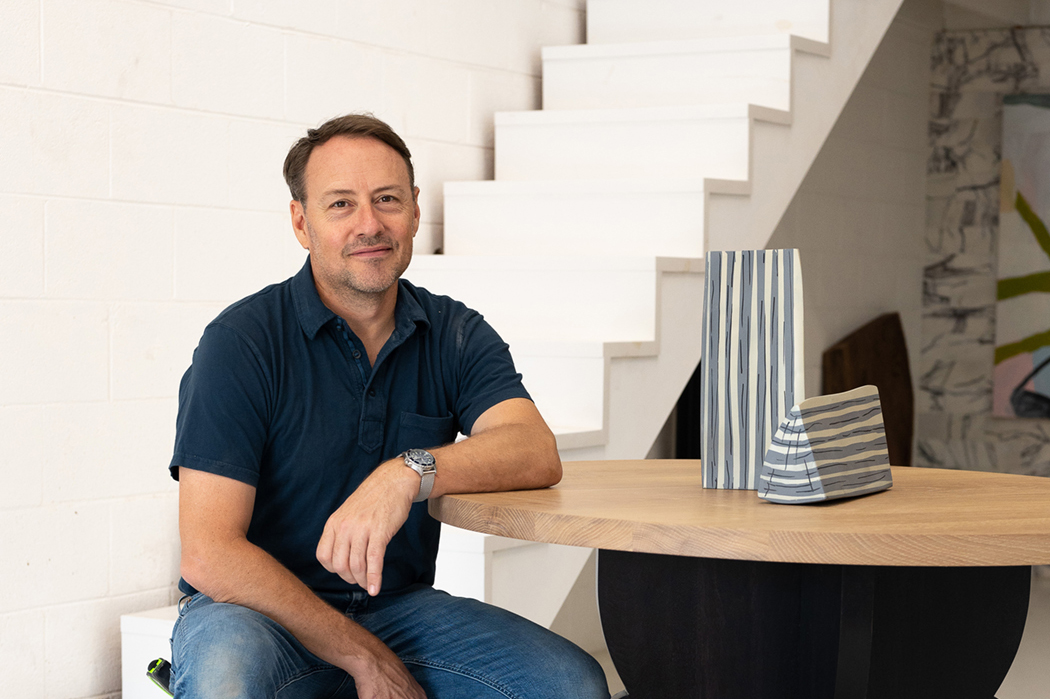Tate Pray doesn’t consider furniture art. But that doesn’t mean his work isn’t artistic.
The classically trained painter, sculptor, and tireless maker began working as a carpenter after earning his art degree. He moved to Charlottesville in 2005, transitioned to concrete formwork and stuck with that for more than a decade.
In 2019, Pray returned to his carpentry roots and launched Poem Furniture to bring handcrafted, solid wood furniture and cabinetry to homeowners with vision. He recently chatted with Abode about his own vision.
Abode: What makes Poem Furniture unique?
Tate Pray: We are antithetical to the throwaway culture that we all reside in, and we hope to basically make a mark in the community by crafting heirloom-quality furniture.
Are most of your pieces made-to-order?
We have a showroom in town and have a number of spec pieces, but the majority of the work is commissioned by architects and designers. They come to us—they know the work I do. Sometimes they want to tailor to clients’ needs or they come to us with a completely different vision of their own we can help realize.

What materials do you use specifically?
We work in all the domestic hardwoods, and a lot of it is local. We work with sawyers and people who dry the lumber locally. We also fabricate our own metalwork, and that’s a component that’s been valuable to our clients. We have the capability to do sand casting and all the resources to fabricate in metal.
How did you move from classical art training to furniture making?
In supporting my art habit, I got into the building trades. I really love making things that are practical. I still make art here and there, but with furniture there is that connection that comes from creating things for people to live with functionally. It’s really gratifying. What art and furniture have in common is a desire to create and work with your hands. I have an atelier-type background and learned all the classical techniques in painting and drawing and sculpture. With sculpture, you have a visual, hands-on way to replicate nature, and the mechanical acumen you develop translates almost directly to furniture design and proportion and form. The only difference is the functional component of it—making something useful.
So furniture is definitely not art?
I think the inherent nature of art is that it doesn’t have a function. So yes, there is a hard line. If you are making things of use, they should be useful. Whether it is comfortable or not is part of the form-function debate.
Do you have any favorite Poem Furniture pieces?
Most everything I make, I love. I think I’ve had success working with designers and riffing off of each other to a positive end—creating something unique and different and exciting for both of us. A lot of the things that excite me have some element of whimsy. That kind of thing scratches a certain part of my DNA. I love making things that have different elements: metal, steel, wood, stone.
So, no. No favorite pieces.
In one instance, over at Oakhurst Inn, a designer and I worked together on a bar. The back bar was there for us to kind of respond to, and one idea was to make a replica in wood. I said, why don’t we make the whole thing in steel? The designer said she was thrilled and we worked out the details together—a glass and steel, mirrored upper bar, steel crown moldings, all welded together. It’s something you don’t see often, kind of harkening to a storefront façade. And there was just a unique moment where the place and piece spoke to a certain material. We just went, “aha.”
